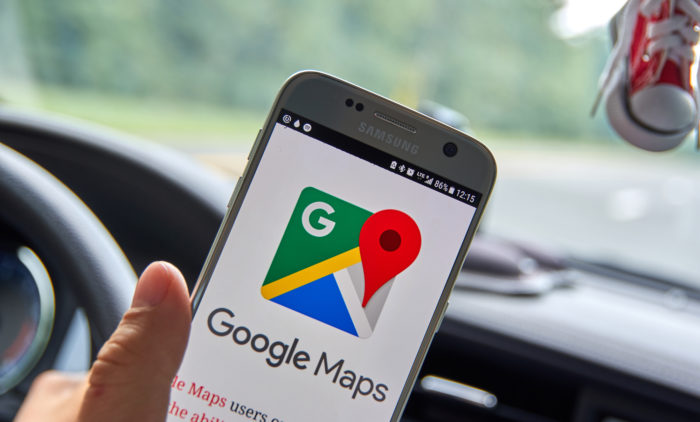What is the Google Local Guide Program– Google Rewards 2022

MONTREAL, CANADA - AUGUST 23, 2017 : Google Maps mobile app and logo. Google is an American multinational technology company that specializes in Internet-related services and products.
What is a Google Local Guide Program, and why are businesses dreading their reviews? Discover the advantages, disadvantages and dangers of the Guides program.
What is Google Local Guide Program? Anyone, with or without a Google account, can join up to become a local guide, assist tourists in navigating your neighbourhood, and discover well-kept secrets that only a local would be aware of. But may corporations be in peril in secret? Some claim that the Google Local Guides programme is inherently dangerously defective. Explore now.
Google Local Guides upload or amend company information, write reviews, offer images, and verify facts on Google Maps. You can quickly and easily sign up for the Local Guides programme to start receiving advantages and points from your Google efforts. Learn how to become a Local Guide and contribute to improving the business information on Google Maps.
It’s hard to argue that local search is now more crucial than ever. Numerous statistics support this claim, such as the 46% of Google searches that are done with the goal of seeking local information.
In light of this, it is also impossible to ignore the fact that user-generated content (UGC) is rapidly gaining significance. A growing body of evidence points to UGC as a crucial instrument in the decision-making process.

Google Local Guides are now more relevant than ever in this online environment.
Before delving into Google Local Guides, let’s take a small step back to discuss the importance of user-generated content in the buying process and the psychology of internet users. This is important because it has a significant impact on the Local Guides concept as a whole.
Salesforce’s research revealed that in 2016, user-generated content was already beginning to gain significance. According to the study, user-generated content-rich pages increased time spent on the site by 90%, engagement rates rose by 50%, email click-through rates rose by 73%, and conversion rates rose by 10%.
Four years later, the BazaarVoice 2020 Shopper Experience Index unequivocally states that an increasing number of brands are giving their customers the ability to “advocate and sell on their behalf.” Significantly, according to the Experience Index, user-generated content has replaced typical image carousels on product pages, giving customers more control. Purchase decisions are significantly influenced by customer product ratings, reviews, posted photographs by consumers, and questions and answers.
Read Also:- Google Pixel 6a Is Out Now – View Prices, Specs & Colors
Keeping in mind that people trust other people is also crucial. Many customers dislike advertising and brand-generated content, especially consumers in the Millennial generation and after. In fact, 84% of Millennials identify as being sceptical of conventional marketing. Peers are then the most dependable source of recommendations for anything from choosing a restaurant and making a hotel reservation to hiring a contractor or selecting a veterinarian.
The Experience Index’s findings, which show a 159% boost in revenue from visitors who interact with reviews, support this claim. The airline industry, for instance, found that just a 10% increase in user evaluations resulted in a more than 5% increase in bookings. Scientific study also offers actual evidence that reviews have a major impact on online sales.
Over the past ten years, our own research has monitored this development. We discover every year that a large majority (nearly 8 in 10 people last year) read online reviews for a local business, and 89% of consumers between the ages of 35 and 54 believe online evaluations are just as trustworthy as personal recommendations.
UGC and Google Local Guide Program
How does this relate to Google Local Guides, then? The purpose of Google Local Guides is directly supported by the relevancy and effect of UGC.
According to Google, guides are people who “write reviews, offer images, respond to inquiries, add or change locations, and verify facts on Google Maps.” Each of them is an illustration of user-generated content. The search engine asserts that millions of users rely on the knowledge offered by Guides to make travel and activity-related decisions.
Because people naturally trust information offered by peers rather than brands, Google Local Guides become significant local influencers that can help determine whether local businesses are popular.
Google Maps and the Local Guides programme are most closely related, with Guides earning points and receiving awards based on their contributions to Maps.
Exactly why Google Local Guide Program ?
A community is how Google characterises the Local Guides. Local customers who participate in the community go out and rate local companies, take photos, discuss their experiences, post reviews, respond to queries based on their own experience with those businesses, add locations that aren’t already on maps, and double-check information.
Points, trophies, and benefits are given in exchange for participation. The incentives programme informs us that this effort is important to Google, which is not unexpected. The guides serve as a global network of on-the-ground fact-checkers and researchers. In order to find, record, and upload local business information in real-time, guides hit the streets. They act as a collective intelligence for the search engine, assisting it in making sure its Maps product is more precise, more current, and superior to competing options. It is reasonable to assume that the effort performed by Guides in their villages and cities across the globe fuels the entire Maps ecosystem.
The acts that Guides take are not only limited to individuals who sign up for the programme, it should be highlighted. You can carry out many of the same tasks even if you choose not to register as a Google Local Guide. For instance, you can use Google Reviews to submit an objective assessment of a local business. A local business’s Google My Business profile and local search results will both display your own photos that you have uploaded of the establishment. By selecting the “share the latest info link” in local search, you can also post a question, suggest a change to a local company listing, and respond to Google inquiries, such as whether a location is wheelchair accessible.
As a Google Local Guide, though, your efforts will be gamified, so the more you contribute, the more points and incentives you’ll earn.
Google Local Guide help with SEO?
The myth that you can make suggested edits to Google My Business profiles more easily as a Google Local Guide is false, which is bad news if you signed up to be a Google Local Guide to improve your local search presence. Before any updates are included in search results or maps, they are all reviewed. There are many potential drawbacks for local businesses using the platform, even though there are no SEO benefits.
Many local search experts claim that some Guides are overly concerned with amassing points, which leads them to make pointless comments in order to boost their profile’s “contribution” point total rather than meaningful contributions that are helpful to Maps users and fair to businesses.
Greg Gifford of SearchLab, a different local SEO expert, claims that Local Guides are frequently a sign of spam. He claims, “I almost view non-Guide reviews as more legitimate because they were left by someone who genuinely wanted to leave a review, as opposed to someone who was churning out reviews just to get a few more points in the system.”
Google has rules in place to stop Guides from abusing the system to gain unfair advantages for their own company. According to its content guideline, all contributions must accurately portray the area, and “inappropriate reviews,” such as bogus and spam reviews, can also be identified. If you do break the rules, the offending material is deleted, and your profile will lose points.
Although evaluations from Google Local Guide are frequently displayed before those from Google My Business, this shouldn’t concern you as a business owner because Google does not allow you to rate your own establishment.
However, as of the date this article was published, Google appears to be testing a new feature that asks Local Guides of Level 5 or higher for feedback on which customer reviews of businesses are “better”.
What is Google Local Guide Program (and why should you care?)
The Local Guides programme enables a global community of explorers to exchange information, gather reviews, share images, verify information, modify Google My Business listing details, and contribute to the upkeep of Google Maps accuracy (and the larger ecosystem of Google features).
Each month, more than a billion individuals use Google Maps to find local businesses and complete their navigational tasks. There is a lot of local business infrastructure and data to maintain!
A astounding 20 million new pieces of information are added to Google Maps every day by its users, who also contribute information from street view vehicles, other map users, local business owners, and satellite data.
How to sign up for the Google Local Guides Program
It’s simple to sign up to be a Google Local Guide. Simply visit the website, register, and begin by posting reviews and pictures of the areas you have visited. Your guide ranking will rise as you interact and review more.
You might have a favourite local food, a secret location, or the ideal position to see a sunset. You may now formally serve as a helpful tour guide (and, while you’re doing it, promote your Instagram photos).
What are the perks of being a Local Guides Program ?
For intrepid volunteers who wish to share their local expertise or travel tales with others who might be like-minded and like travelling, Google has created the Local Guides initiative.
As a Local Guide, you may gain points, badges, and local guide perks to satisfy your insatiable desire for reward (right, millennials?) while also providing fantastic information for potential customers and increasing the online visibility of local companies.
Your first Local Guides badge will become available once you complete level four of the Guides programme, which will help people find your contributions and locations.
You will receive additional advantages from Google, including early access to exclusive benefits, brand-new Google products, and top-secret partner benefits. If you’re lucky, you might even appear in one of their promotional videos or perhaps get invited to a summit that brings together the best Local Guides in the world, all expenses paid.
How to score Google Local Guide points and badges
Over brand-generated information or advertising, people tend to trust customer reviews more. We frequently look to other people’s behaviours and opinions when we haven’t formed our own, whether it be while looking for a dependable plumber, dining out, or discovering a hidden gem to explore.
Badges, benefits, and points are awarded for Local Guides participation. The Google Maps ecosystem is powered by the local guides throughout the world, who thrive on giving reliable, current information—most of the time.
Because of the real-time gamification system used by Google Local Guides, the more you share and contribute, the more points and incentives you will eventually earn.
The badges and points you earn can also be exchanged with thousands of Google partners. You must contribute to Google Maps in order to receive points, and you must be active in order to receive badges.
Awards, points, and badges
Local guides have the ability to ask and respond to inquiries, edit locations (keeping the information current), and evaluate nearby companies. In a local search, you might answer questions on the information panel, leave a review, add a missing location, amend and update information, and frequently verify facts.
A specific number of points will be awarded to you for each donation. For instance, if you submit a picture, you’ll get five points; if you write a long review with more than 200 characters, you’ll get 10 points plus an extra 10 bonus points. You can earn badges by swiftly accumulating points.
You must accrue up to 250 points before you can get your first badge. The super-star tier at level ten has 100,000 points!
Businesses are beginning to realise that their clients are their greatest brand ambassadors and supporters. Consumers have so replaced conventional product sites with user-generated content. Purchase decisions are significantly influenced by their product ratings, submitted photos and videos, questions and answers, and product ratings.
Gamifying reviews: The dangers of local guides (points for the sake of points)
Although Google Maps and Local Guides were created with the best of intentions, some Local Guides are only in it for a fast rush of dopamine as they rack up badges and awards, not for the well-being of Google’s ecosystem.
The term “gamification” refers to the application of game elements to non-gaming contexts. In real life, you may spot gamification when ordinarily mundane, dull, every day tasks suddenly become exciting, engaging, and rewarding. Gamification: receive a badge for writing a review! Waze candy collection while driving? Gamified!
Gamification techniques are applied to products and services by clever marketers and product designers to boost engagement, fun, and loyalty. The same may be said for Local Guides and Google Maps. However, the gamified dopamine rush of Local Guides rewards can lead people to act in a way that serves the community less authentically and more for the sake of earning points or badges.
The more points you get, the better your Local Guide level (and trust level) rises. In the quest for points, what does it matter if you occasionally receive poor reviews, provide a few cursory replies, or use a phoney photo? Earned badges are hidden from the public, but your level is displayed, and other Google searchers trust this.
In short, a programme that was initially a fantastic idea has lost value due to bad implementation, which has compromised the credibility of the contributions. You may navigate through the Google Q&A area and discover a tonne of quick, sarcastic responses that have scored points, but they aren’t accurate, helpful, or amusing to read.
Are Local Guides actually trustworthy? (How to tell)
Unfortunately, not all local guides are operating with the best intentions. Many businesses have at some point received fraudulent (or low effort) reviews or ratings, which are detrimental to their business. The majority of Local Guides contribute to the ecosystem as intended, though.
But why would they act in this way?
More thrilling than providing frank, beneficial reviews is racking up points, unlocking badges, and gaining influence.
Anyone looking for a neighbourhood restaurant or shop who reads reviews may put more faith in a Local Guide’s advice. But paradoxically, you can tell how implausible certain badge holder reviews are by reading them.
The Local Guides programme was designed to make Google Maps a reliable source of useful information that is actually helpful. Unfortunately, those who are just trying to earn a Local Guide badge are leaving an increasing number of pointless and damaging reviews.
So, should you have faith in them? To check if you are familiar with the guide, click on their profile. Then, investigate to determine whether they have a fraudulent account or are attempting to manipulate the system on purpose.
Final Words
In addition to providing ratings, correcting inaccurate information, adding missing locations, and sharing photographs and videos, Google Local Guides also play a significant role in Google Maps. This information is helpful for local consumers, and the system’s gamification makes it an enjoyable method for devoted search users to interact with Google goods.
The Google Local Guides programme should not be used as part of any local search strategy or relied upon for benefits like preferential editing or higher results, however, as there is no SEO benefit for joining.









